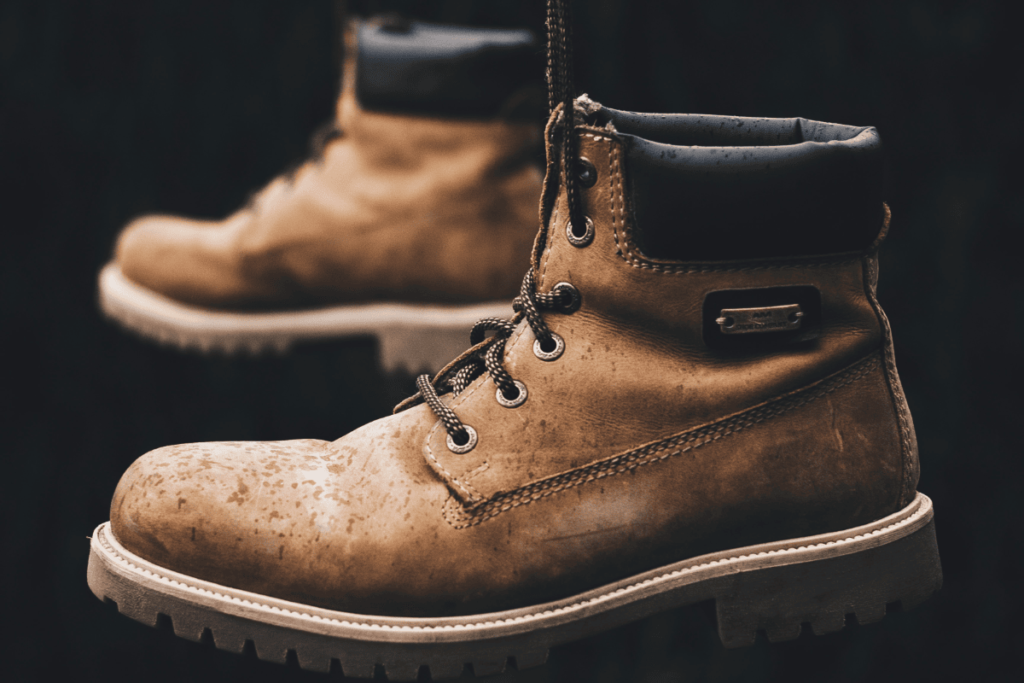When it comes to hiking, your boots are your best friend, although my hiking poles may want to debate that statement. When it comes to your boots, the laces are an essential component that often gets overlooked. Properly fitted and maintained laces can make a big difference in the comfort and performance of your hiking boots. In this article, we’ll discuss everything you need to know about hiking boot laces, from proper length to repair and maintenance tips.

The Importance of Properly Fitted Laces
First and foremost, it’s important to have the right length laces for your boots. Laces that are too long can become tangled, tripped over, or caught on rocks or branches. On the other hand, laces that are too short can leave your boots feeling too tight, leading to discomfort or even blisters.
To determine the proper length of your hiking boot laces, you should consider the number of eyelets or hooks on your boots. A good rule of thumb is to add 12-18 inches to the length of your boots. For example, if you have hiking boots with six pairs of eyelets, you’ll need laces that are between 72-90 inches long.
REI has a fantastic guide to different lacing patterns for hiking boots
- Surgeon’s Knot: Simple and versatile, it can keep your heel from slipping.
- Window Lacing: Alleviates pressure points on the top of your foot.
- Toe-Relief Lacing: A stopgap remedy to get you back to the trailhead.
Repairing Hiking Boot Laces
No matter how carefully you maintain your hiking boots, the laces are bound to wear out eventually. The good news is that repairing hiking boot laces is a quick and easy task. All you need is a replacement lace and a little bit of time.
To replace your hiking boot laces, begin by removing the old laces. Then, thread the new laces through the eyelets or hooks, making sure to keep the lace tension even on both sides. Finally, tie your laces in a secure knot, and you’re ready to hit the trails once again.
Don’t forget to inspect your aglets.
An aglet is a small plastic or metal tag that is attached to the ends of shoelaces to prevent them from fraying and make it easier to thread them through the eyelets or hooks on your boots. Aglets come in a variety of shapes and sizes, and are typically made from materials that are durable and resistant to wear and tear.
Replacing Hiking Boot Laces
Over time, even the most durable hiking boot laces will eventually wear out or break. When this happens, it’s important to replace them promptly to ensure that your boots fit properly and your feet stay protected on the trail.
Here are a couple of popular brands of hiking boot laces that you may want to consider when replacing your laces:
- Timberland: Timerland offers a variety of high-quality hiking boot laces that are designed to withstand the wear and tear of the trail. Their laces are made from durable materials, such as nylon and polyester, and come in a range of lengths to fit a variety of boot styles.
- IRONLACE: IRONLACE is another popular brand that offers durable and reliable hiking boot laces. Their laces are made from tough materials, such as paracord and leather, and are designed to hold up in rugged terrain. They also come in a variety of colors to match your boots or personal style.
Remember that while brand name can be a factor in choosing hiking boot laces, the most important consideration should be the length, material, and durability of the laces to ensure a comfortable and safe hiking experience.

How to replace your hiking boot laces in a few simple steps:
- Remove the old laces: Begin by carefully removing the old laces from your boots, taking care not to damage the eyelets or hooks.
- Choose the right length: Measure the length of your old laces, or refer to the manufacturer’s recommendations to determine the correct length for your boots.
- Select the right material: Consider the type of terrain you’ll be hiking on, as well as the weather conditions you may encounter, when choosing a replacement lace material. Some popular options include nylon, polyester, paracord, and leather.
- Thread the new laces: Begin threading the new laces through the eyelets or hooks, starting at the bottom of the boot and working your way up. Be sure to keep the tension even on both sides of the boot to ensure a comfortable, secure fit.
- Tie the laces: Once you’ve threaded the laces through all of the eyelets or hooks, tie them in a secure knot at the top of the boot. You may also want to tie a double knot or use a locking knot to prevent the laces from coming undone during your hike.
Maintenance Tips for Hiking Boot Laces
Proper maintenance can extend the life of your hiking boot laces, saving you time and money in the long run. Here are a few tips to help you keep your laces in good condition:
- If you were hiking in water or wet environments, remove your laces from your boots after the hike to allow them to dry thoroughly.
- Store your laces in a cool, dry place to prevent mold or mildew growth.
- Avoid using harsh chemicals or bleach on your laces, as this can weaken the fibers and cause them to break down faster.
- Check your laces regularly for signs of wear or damage, and replace them as needed.
By following these simple maintenance tips, you can ensure that your hiking boot laces are always ready to go when you are.
Final Thoughts
Hiking boot laces are an essential component of any hiker’s gear. By selecting the proper length laces, repairing them when necessary, and maintaining them properly, you can extend the life of your boots and ensure a comfortable, enjoyable hiking experience. Remember to check your laces regularly and replace them as needed, and you’ll be ready for your next outdoor adventure in no time.
FAQs
It’s best to use laces specifically designed for hiking boots, as they are typically more durable and abrasion-resistant than other types of laces.
A good rule of thumb is to add 12-18 inches to the length of your boots. If your laces are too long, they may become tangled or caught on obstacles. If they are too short, your boots may feel too tight or uncomfortable.
It depends on how often you hike and how well you maintain your laces.
An aglet is a small plastic or metal tag that is attached to the ends of shoelaces to prevent them from fraying and make it easier to thread them through the eyelets or hooks on your boots. Aglets come in a variety of shapes and sizes, and are typically made from materials that are durable and resistant to wear and tear.
If you break a lace on the trail, you can use a temporary fix such as duct tape or paracord until you can replace the lace. It’s always a good idea to carry a spare set of laces in your pack, just in case.
It’s important to tie your laces tight enough to keep your boots secure and prevent your foot from sliding around inside the boot, but not so tight that they cut off circulation or cause discomfort. A good rule of thumb is to tie your laces snugly, but with enough room to wiggle your toes.